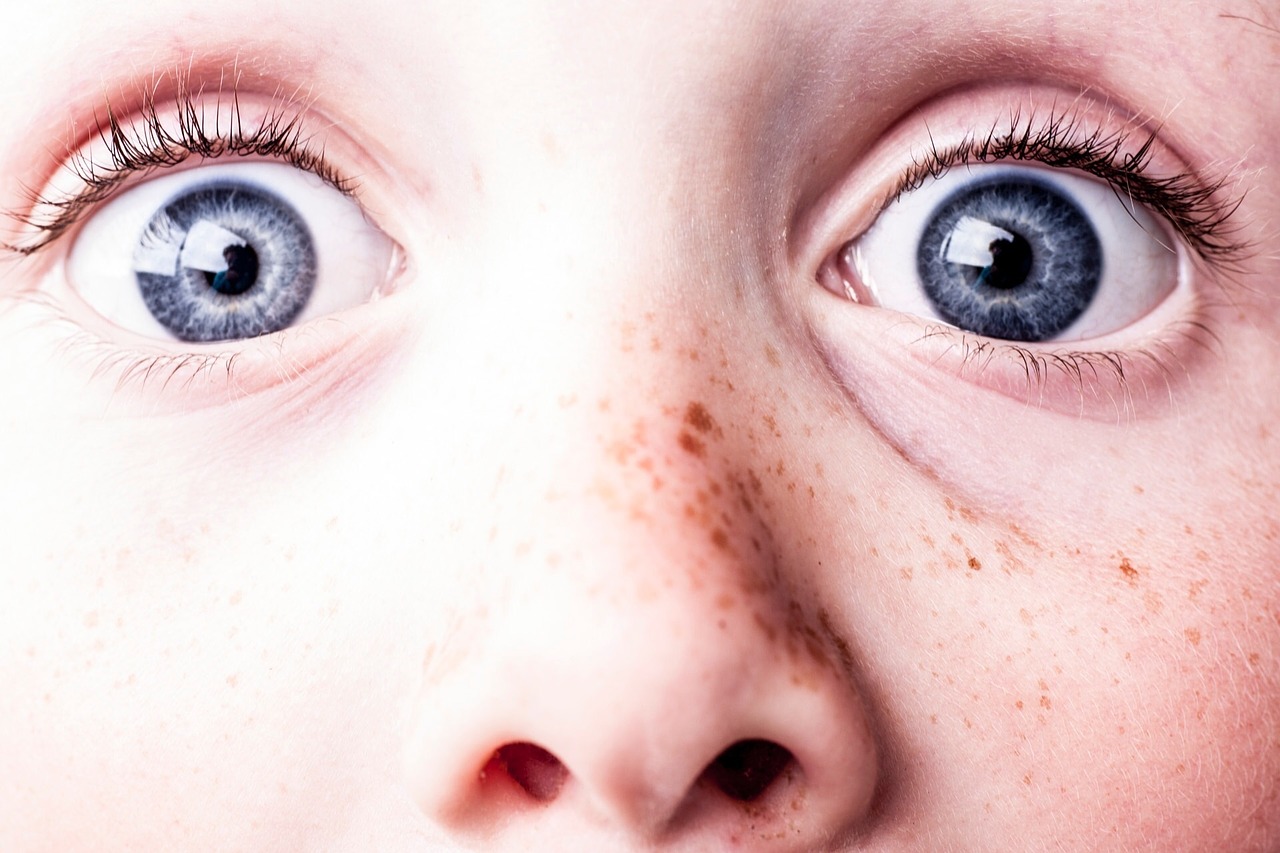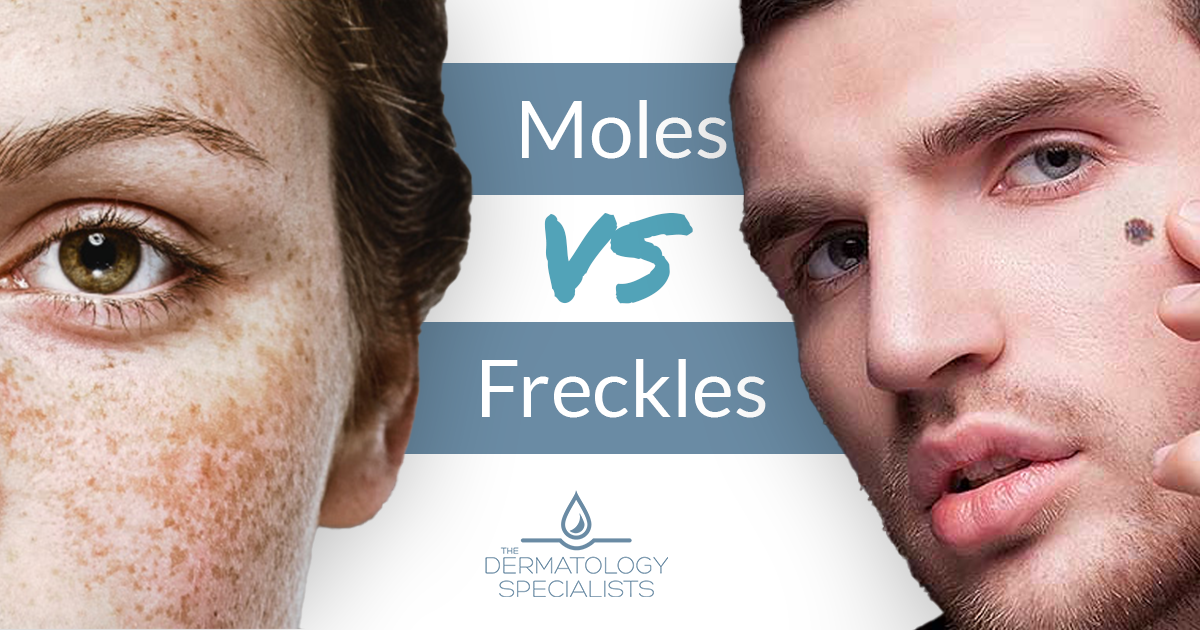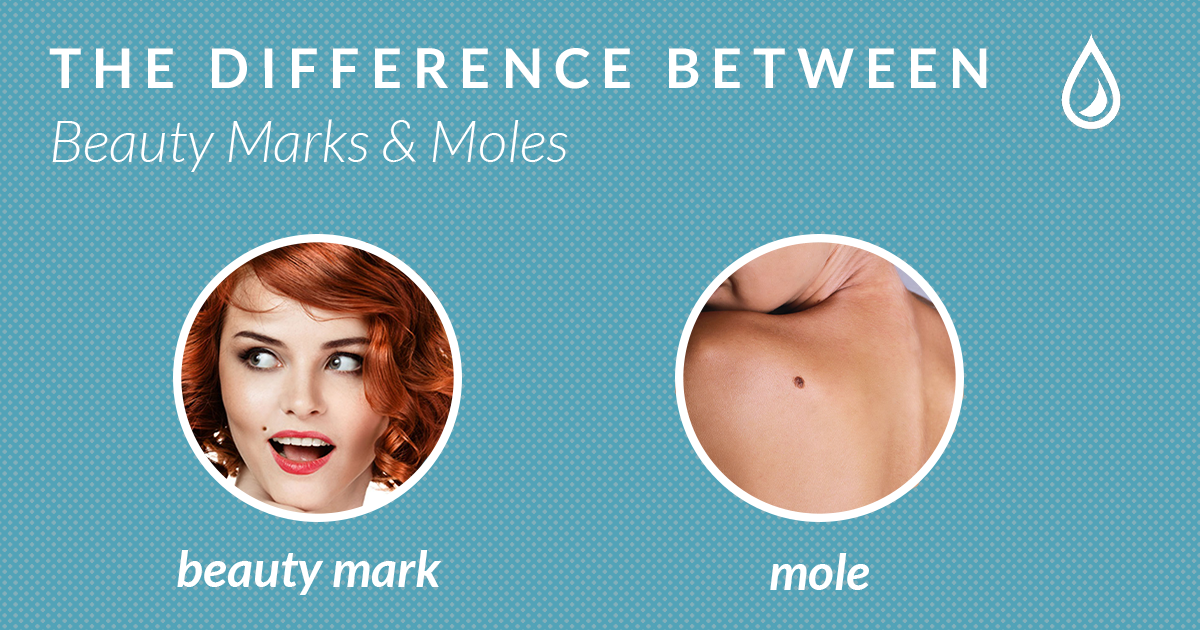
While both moles and freckles add a distinctive and unique appearance, knowing the difference can help you determine when it comes time to get a mole checked out!
Curious about the difference between moles and freckles? We’ve got all the information you’ll need.
While similar in appearance, they’re actually quite different.
Moles and freckles, dark spots on the skin caused by extra-pigmented skin cells, are both common occurrences in the skin.
Freckles are often genetic and also brought on by excessive sun exposure. They form due to an overproduction of melanin, the agent responsible for pigmentation in both your skin and hair.
Moles, however, are formed when skin cells grow in a cluster formation instead of being spread throughout the skin. These types of cells are melanocytes, which make the pigment that gives skin its natural color.
The fastest way to tell the difference between moles and freckles is to feel the area. Moles are often raised from the skin’s surface while freckles tend to be flat. Moles are also generally darker in color than freckles.
Freckles are simply skin cells that form melanin, or melanocytes, that have either appeared, or darkened, due to sun exposure. Melanin is a pigment, or color, that helps protect skin from exposure to the sun by reflecting or absorbing harmful ultraviolet rays.
It’s exposure to those rays that causes some melanocytes to create more melanin, which is why the darker spot develops.
But, melanocytes are distributed throughout your skin and the melanin they produce is the natural pigment that gives your skin its color.
Moles, or nevi (the medical term), usually look like a type of growth on the skin, and are just as common as freckles. Often, moles appear as small, dark brown spots. They are caused when melanocytes grow in clusters or clumps. Moles are usually a bit darker than freckles, and deeper in the dermis, or deeper in the skin.

Moles can be brown, tan, black and even red, blue or pink. Oval or round in shape, they feel smooth or wrinkled and can be flat or raised. They can also have hair growing from them!
Generally moles appear during childhood or adolescence, and most people have between 10 and 45 moles by the time they are 40 years old. Some may fade, or even disappear, with age.
Usually, moles are smaller than a pencil eraser, less than 1/4 inch (about 6 millimeters) in diameter.
Freckles and moles have two things in common: there is a genetic tendency to get them, and both are darker than the surrounding skin.
However, there is one big difference. Freckles have zero potential for malignant transformation.
While most moles are harmless they can, rarely, become cancerous. Moles that have some potential for malignant transformation will often change, either growing or showing a different border. Symptoms like itching or bleeding are also of concern.
Paying attention to moles and other pigmented patches in the skin is an important step in detecting skin cancer, particularly malignant melanoma. If there is a change it’s important to see a dermatologist immediately.
If you’re curious about moles, you’re also likely curious about the difference between a mole and a beauty mark.
In truth, a mole and a beauty mark are the same thing. However, because certain placements of moles can add to a person’s appearance, they’ve been coined as beauty marks instead.
Moles like this can be located on the face, neck, shoulder/collarbone area in order to be considered a beauty mark. And while attractive, they are still moles and should be treated as such should they change in shape, size, or color.

Freckles vary in color depending on the person and their genetic makeup. But excessive exposure to sun may cause your freckles to deepen in color.
While still not actually harmful, they can cause some discomfort in your appearance and are usually a sign that your skin has been exposed to too much sun in the first place (not to mention that dark spots can actually make you look older!).
If you do end up with freckles so dark to a point you don’t like them, there are always options to lighten or remove freckles.
One more fun fact about freckles: People with fair, or light, complexions have less melanin in their skin and, when sunlight causes their melanocytes to make more, they often get freckles instead of an even suntan.
Concerned about a mole? Make an appointment with Bobby Buka MD here today.